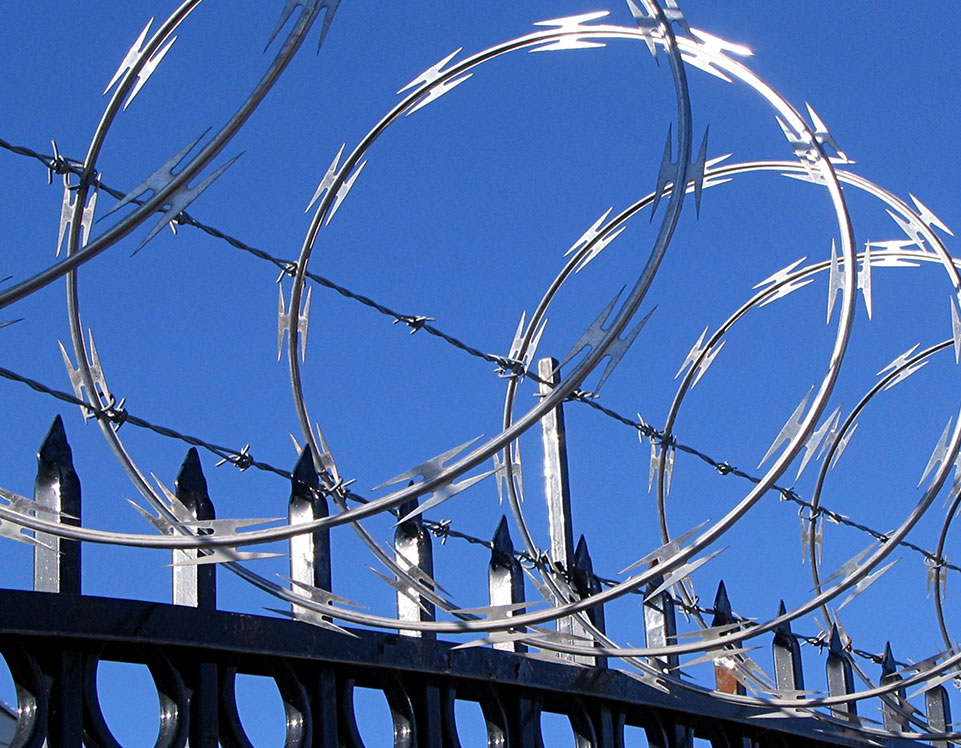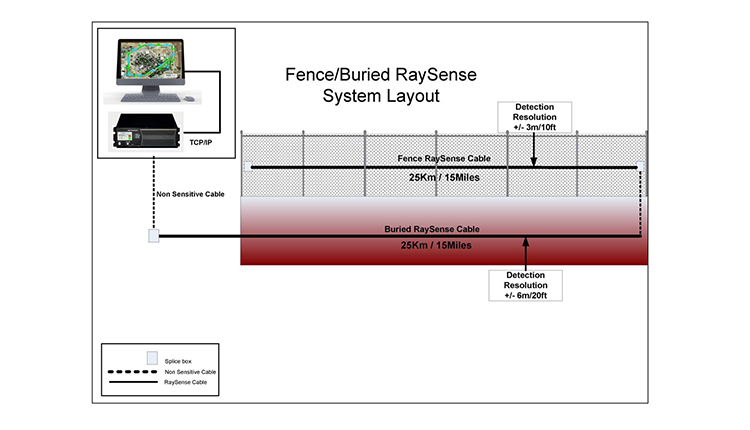Why Fiber Optic Protection Equipments Are the Future of Defense
The change to fiber optic security systems notes a significant improvement in the world of protection, driven by their outstanding data transmission abilities and strength to external disturbances. These systems not only help with faster and a lot more trusted interaction yet likewise provide an economical option with reduced maintenance demands. As the landscape of safety and security progresses alongside arising technologies such as AI and IoT, the capacity for optical fiber to improve and redefine protection facilities becomes significantly apparent. However, the effects of these innovations elevate critical concerns about the future of security procedures and their performance in an ever-changing setting.
Advantages of Fiber Optic Systems
Among the key advantages of fiber optic systems is their exceptional data transfer capacity, which facilitates the transmission of huge quantities of information over lengthy distances without substantial loss. This particular is specifically useful for protection applications that need the continuous surveillance and transfer of high-def video feeds, sensor data, and various other critical info. Fiber optics can fit the growing demands of contemporary safety systems, guaranteeing that information stays intact and reliable.
In addition, fiber optic cords are much less at risk to electromagnetic disturbance, which can be a substantial issue in atmospheres with different digital devices. This resistance boosts the integrity of the data being transmitted, therefore reducing the risk of data violations or system failings. Fiber optic systems are inherently extra safe than conventional copper cable televisions, as tapping into a fiber optic line without detection is exceedingly challenging.
The durability of fiber optic wires also adds to their appeal. They are immune to environmental factors such as wetness and temperature changes, minimizing upkeep expenses and enhancing system durability. Generally, these benefits setting fiber optic systems as a durable and effective selection for modern-day protection infrastructures, making sure trusted and secure information transmission.
Boosted Information Transmission Rate

The capability to transmit large amounts of information quickly helps with the smooth integration of high-definition video clip feeds and progressed analytics. Protection systems can currently refine and evaluate information in real-time, improving response times and situational understanding. Furthermore, fiber optic links sustain longer transmission ranges without destruction of signal quality, making them perfect for extensive safety and security networks.
The raised speed of fiber optic systems not just enhances the efficiency of protection operations however also lowers latency. This is specifically crucial in critical situations where timely decision-making can protect against security breaches or minimize prospective dangers. As organizations remain to focus on safety and performance, the demand for fast and dependable information transmission will definitely solidify fiber optic systems as a cornerstone of modern-day protection facilities.
Resistance to Disturbance
Fiber optic safety systems consistently demonstrate phenomenal resistance to electro-magnetic disturbance, a vital advantage in settings susceptible to linked here digital noise. Unlike standard copper cords, which can be adversely affected by magnetic fields, radio regularity disturbance, and various other forms of electric disturbance, fiber optic wires make use of light to send data. This integral home guarantees that the signals stay clear and unaltered, no matter bordering digital activity.
Making use of glass or plastic fibers in fiber optic modern technology develops a barrier against interference, enabling for trusted data transmission even in difficult scenarios such as industrial centers, urban areas with high electronic website traffic, or places near radio towers. This characteristic substantially minimizes the possibility of signal degradation or loss, making fiber optic systems specifically suitable for safety and security applications where stability and precision of data are paramount.
Additionally, this resistance to interference enhances the general efficiency and integrity of safety systems, making certain that tracking and alert systems function perfectly. In a world where safety and security is increasingly intimidated by innovative technologies, the resilience of fiber optic systems attracts attention as an essential attribute, reinforcing their condition as an essential component of modern protection infrastructure.
Cost-Effectiveness With Time
Substantial expense savings can be accomplished over time with the execution of fiber optic protection systems. While the first investment may seem higher contrasted to conventional copper-based systems, the long-lasting economic advantages come to be noticeable with reduced operational and upkeep expenses (fiber security). Fiber optic cords are naturally a lot more long lasting and less susceptible to ecological variables, which translates to lower substitute and fixing costs over their lifespan
Additionally, fiber optic systems need less power to operate, which better lowers power expenses. Enhanced data transmission abilities permit less repeaters and amplifiers, reducing equipment financial investment and improving installation processes. The scalability of these systems additionally adds to cost-effectiveness, as companies can increase their safety and security facilities without sustaining significant extra expenditures.
An additional element to take into consideration is the raised performance in monitoring and response capacities that optical fiber provide. Improved real-time information transmission can cause quicker case feedback times, possibly mitigating losses and liabilities associated with safety and security violations. Altogether, the long-term benefits of fiber optic safety systems not just validate the preliminary expenditure however likewise position them as a monetarily look at here sensible selection for companies looking for durable defense remedies.

Future Innovations in Security
Progressing innovations are readied to revolutionize safety systems, integrating expert system (AI) and artificial intelligence to enhance risk discovery and reaction abilities. These advancements will allow safety and security systems to examine substantial quantities of data in real-time, identifying patterns and anomalies that indicate possible hazards. This aggressive method will certainly make it possible for quicker decision-making and a lot more effective event reactions.
Additionally, the consolidation of the Web of Things (IoT) is leading the way for interconnected safety and security gadgets, offering thorough security and surveillance. Smart sensors can communicate info regarding environmental modifications, while automated informs Read Full Report can inform safety employees promptly of suspicious tasks.
Additionally, the development of biometric technologies will even more strengthen safety systems. Face recognition, fingerprint scanning, and retina identification are becoming a lot more sophisticated, providing layers of verification that are tough to bypass.
Final Thought
To conclude, fiber optic security systems stand for a considerable innovation in security modern technology, providing unparalleled information transmission speed, resistance to electro-magnetic disturbance, and long-term cost-effectiveness. As the need for innovative security options continues to expand, the integration of optical fiber with emerging technologies such as AI, IoT, and biometrics will better improve security infrastructures (fiber security). The mix of these developments will ensure a more safe and responsive setting, strengthening optical fiber as a foundation of future safety systems